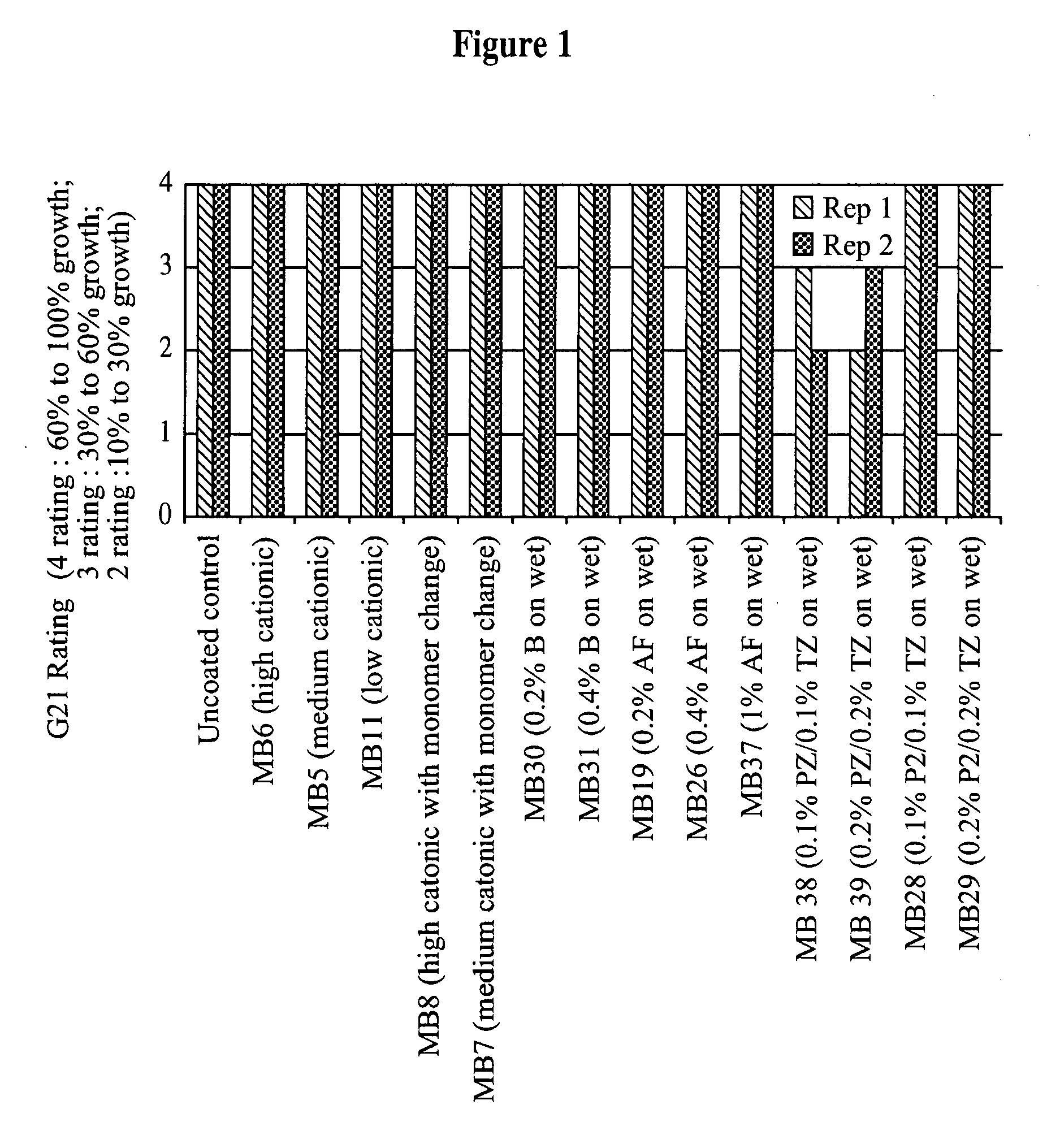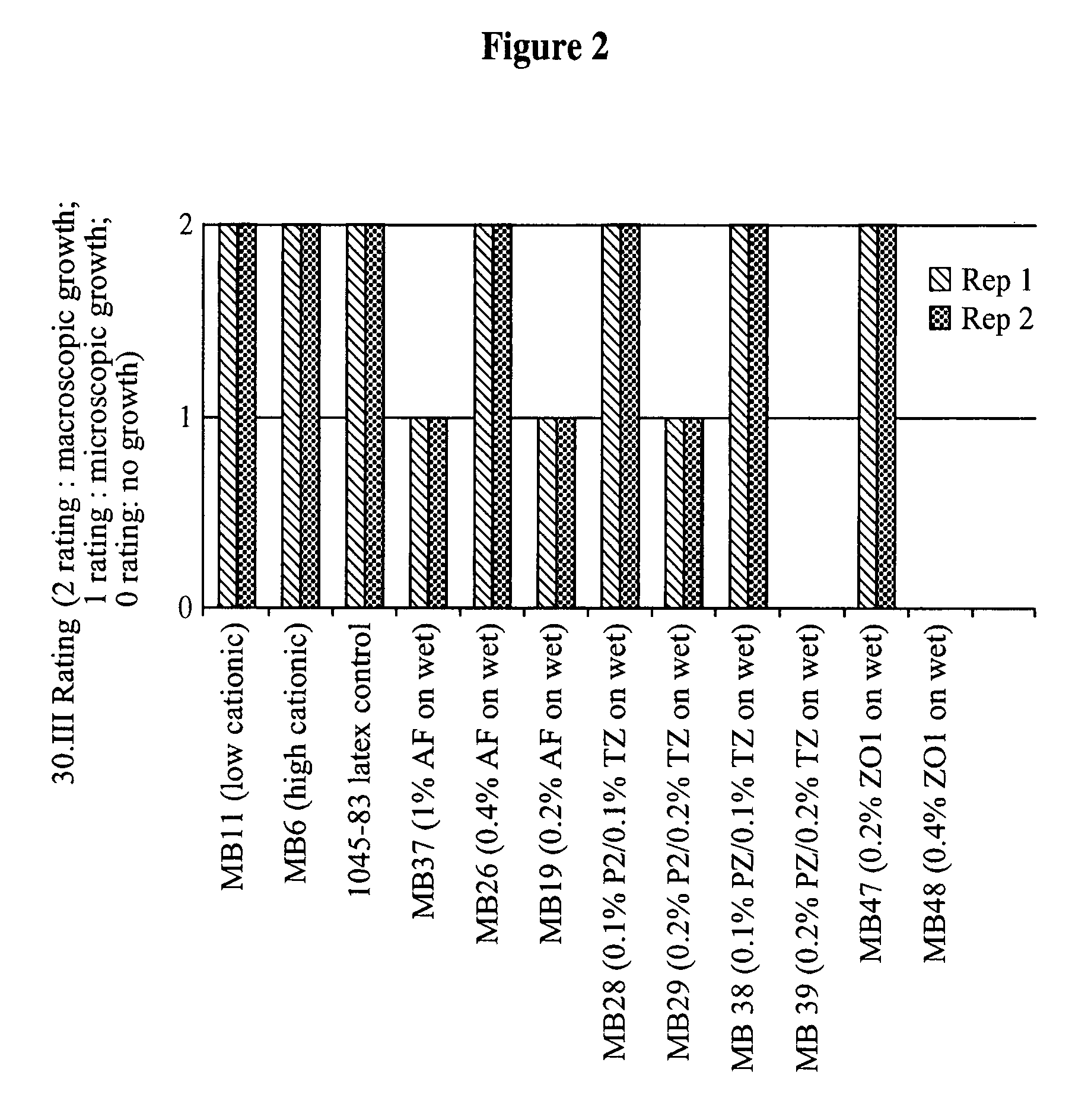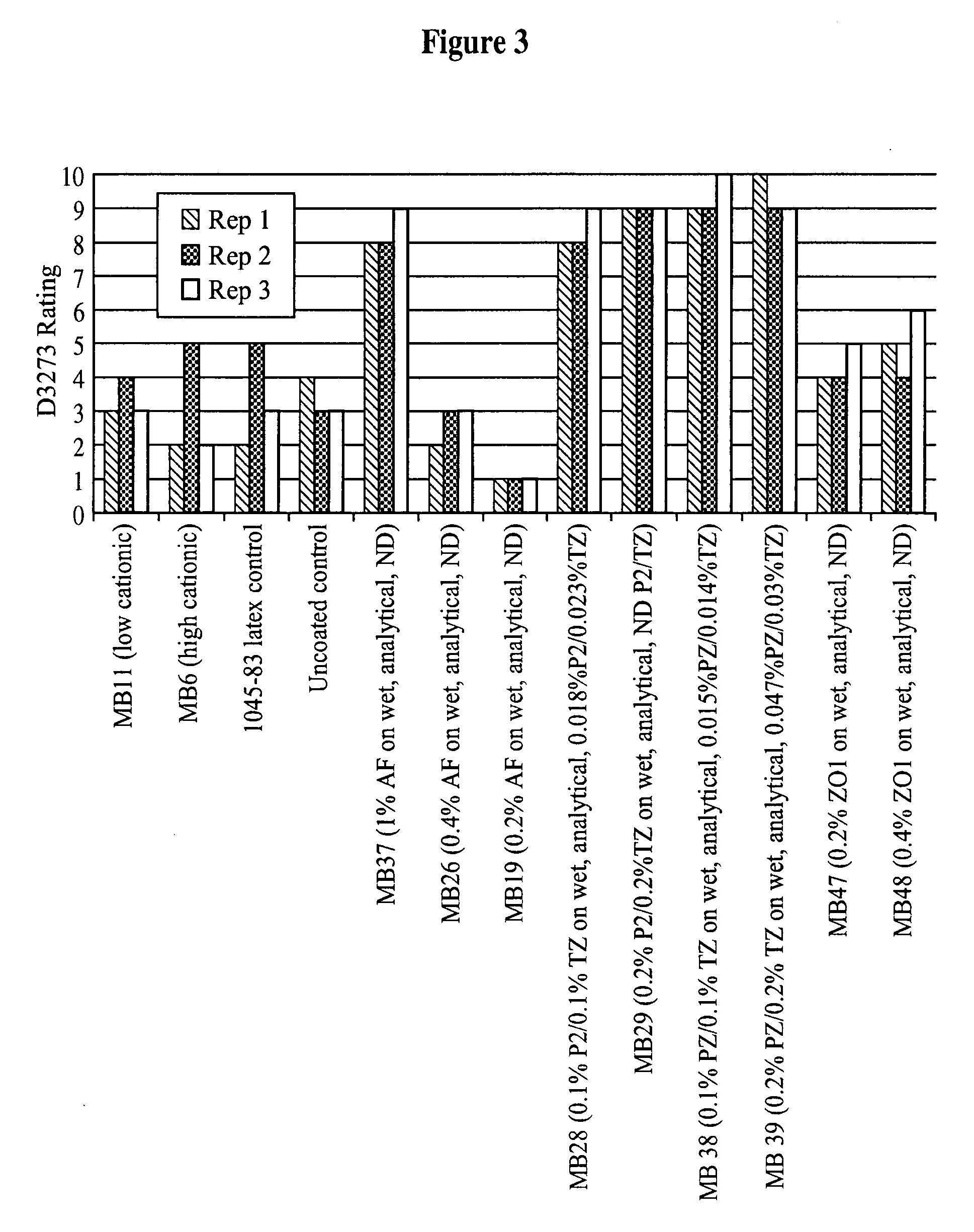Cationic latex as a carrier for bioactive ingredients and methods for making and using the same
- Summary
- Abstract
- Description
- Claims
- Application Information
AI Technical Summary
Benefits of technology
Problems solved by technology
Method used
Image
Examples
example 1
Bioactive Cationic Latex Prepared by Early Introduction of the Bioactive Agent
[0121] A one-gallon reactor can be charged with the following ingredients: about 1142 g of water; about 5.95 g of the nonionic surfactant ABEX™ 2525 (Rhodia); about 11.90 g of methoxy polyethyleneglycolmethacrylate (MPEG 550 from Cognis); and about 31.7 g of dimethylaminoethyl methacrylate methyl chloride quaternary (AGEFLEX™ FM1Q75MC from Ciba Specialty Chemicals). The reactor contents then can be deoxygenated by subjecting the reactor to several vacuum / N2 fill cycles, after which about 59.5 g of butyl acrylate and about 119 g of styrene can be added to the reactor. The reactor is again subjecting to several vacuum / N2 fill cycles, after which the temperature of the reactor contents can be increased to about 165° F., at which time an initiator solution of about 23.80 g of water and about 2.38 g of WAKO V-50 (Wako Chemicals) is injected into the reaction mixture. This reaction mixture is maintained at abou...
example 2
Bioactive Cationic Latex Prepared by Late Introduction of the Bioactive Agent
[0129] An emulsion polymerization reaction can be conducted according to the details provided in Example 2, except that an approximately 49 g-sample of bioactive component can be introduced into the mixed monomer stream after about 4 hours of a 5 hour styrene / butyl acrylate feed. This process involves dissolving the bioactive agent in about 124 g of the styrene / butyl acrylate monomer mixture that is introduced into the reactor over the final 1-hour feed period of the mixed monomer feed.
example 3
Evaluation of Cationic Latex Incorporating Antifungal Agents
[0130] Antifungal wallboard was identified as a target for the evaluation of a cationic latex incorporating an antifungal agent. The goal of this example was to deliver the antifungal agent is through a cationic polymer incorporated into the paper facing of the gypsum wallboard in a conventional wet end process used for paper making.
[0131] Several cationic polymers were made, with a variety of antifungal additives incorporated into the polymers during the polymerization process, at various levels. The polymers were tested both as coatings on paper as well as by addition in a wet end process. The main antifungal evaluations were conducted based on ASTM G-21 and ASTM D-3273, which showed that the best antifungal results were obtained using a combination of two antifungal additives (propiconazole (“PZ”) and tebuconazole (“TZ”)).
[0132] The coating study indicated that a PZ / TZ level of 0.4% on a wet basis had a significant in...
PUM
| Property | Measurement | Unit |
|---|---|---|
| Fraction | aaaaa | aaaaa |
| Fraction | aaaaa | aaaaa |
| Fraction | aaaaa | aaaaa |
Abstract
Description
Claims
Application Information
 Login to View More
Login to View More - R&D
- Intellectual Property
- Life Sciences
- Materials
- Tech Scout
- Unparalleled Data Quality
- Higher Quality Content
- 60% Fewer Hallucinations
Browse by: Latest US Patents, China's latest patents, Technical Efficacy Thesaurus, Application Domain, Technology Topic, Popular Technical Reports.
© 2025 PatSnap. All rights reserved.Legal|Privacy policy|Modern Slavery Act Transparency Statement|Sitemap|About US| Contact US: help@patsnap.com



